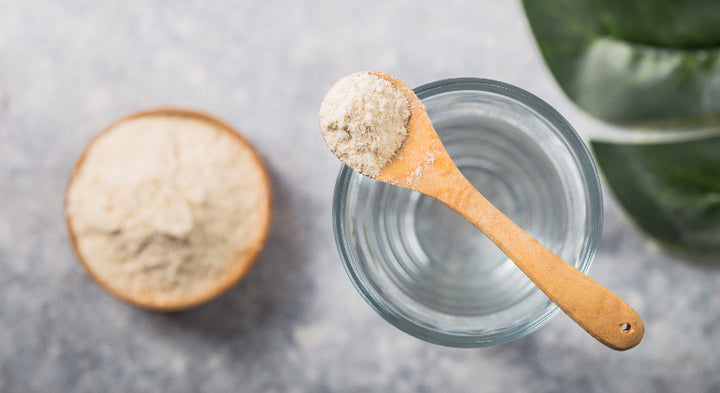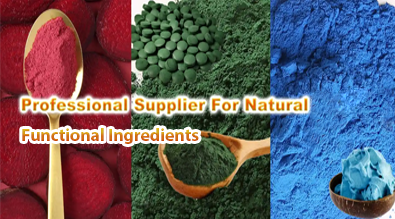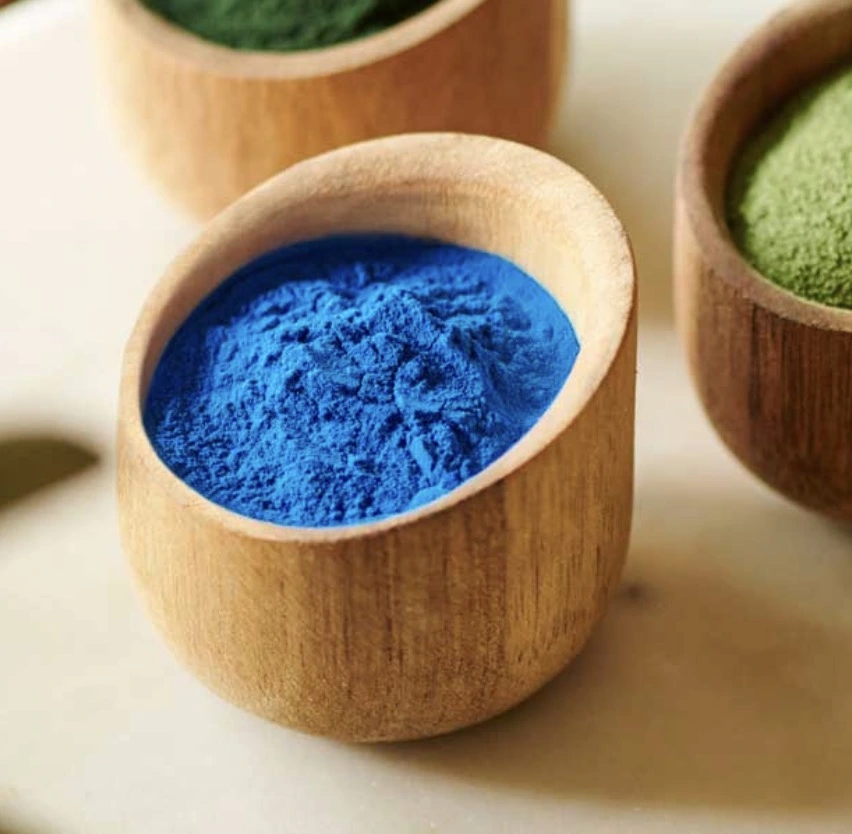How Hydrolyzed Fish Collagen Boosts Collagen Production for Firmer, Tighter Skin?
Hydrolyzed fish collagen has emerged as a revolutionary ingredient in the pursuit of firmer, tighter skin. This bioactive protein, derived from marine sources, works by stimulating the body’s natural collagen production mechanisms, thereby enhancing skin elasticity and reducing visible signs of aging. Unlike other collagen types, hydrolyzed fish collagen is composed of smaller peptides that are more easily absorbed by the body, ensuring maximum efficacy.
When ingested or applied topically, these peptides penetrate deep into the dermis, where they activate fibroblasts—the cells responsible for producing new collagen fibers. This process not only replenishes lost collagen but also strengthens the skin’s structural integrity, leading to a smoother, more youthful appearance. With its unparalleled bioavailability and compatibility with human collagen structures, hydrolyzed fish collagen stands out as a superior choice for anyone seeking to revitalize their skin naturally.

What is Hydrolyzed Fish Collagen and How Does It Work?
The Origins and Composition of Hydrolyzed Fish Collagen
Hydrolyzed fish collagen originates from the scales, skin, and bones of marine fish, which are rich in Type I collagen—the most abundant collagen type found in human skin. Through a process called enzymatic hydrolysis, large collagen molecules are broken down into smaller peptides, making them highly soluble and bioavailable. These peptides retain the essential amino acids—glycine, proline, and hydroxyproline—that play pivotal roles in maintaining skin health. The unique composition of hydrolyzed fish collagen aligns closely with human collagen, allowing it to integrate seamlessly into the body’s natural systems. Its marine origin also ensures a purer product, free from contaminants often associated with bovine or porcine collagen sources.
Mechanism of Action: Absorption and Bioavailability
The effectiveness of hydrolyzed fish collagen lies in its superior absorption rate. Once ingested, the small peptides bypass the digestive system's breakdown processes and enter the bloodstream intact. This efficient delivery system ensures that the peptides reach target tissues, such as the skin, where they stimulate cellular activity. Upon reaching the dermis, these peptides signal fibroblasts to produce new collagen fibers, elastin, and hyaluronic acid. This cascade of biological events not only boosts collagen synthesis but also enhances hydration and elasticity, resulting in firmer, more resilient skin. The rapid absorption and high bioavailability of hydrolyzed fish collagen set it apart from other collagen supplements, making it an ideal choice for those seeking noticeable improvements in skin texture and firmness.
Applications Across Industries
Hydrolyzed fish collagen finds applications across various industries, particularly in food and beverage manufacturing, dietary supplements, and skincare formulations. In the food sector, it is incorporated into functional beverages, protein powders, and fortified snacks to promote skin health from within. Nutraceutical manufacturers utilize it in capsules and tablets designed to support anti-aging regimens. Meanwhile, skincare brands leverage its benefits in serums, creams, and masks to deliver targeted results. Its versatility and compatibility with different formulations make hydrolyzed fish collagen a sought-after ingredient for companies aiming to innovate and meet consumer demands for effective, science-backed solutions.

The Science Behind Hydrolyzed Fish Collagen's Effect on Skin Health
Cellular Interactions and Skin Regeneration
At the cellular level, hydrolyzed fish collagen interacts with receptors on fibroblasts, initiating biochemical processes that support skin regeneration. This interaction boosts the expression of genes responsible for collagen production, resulting in an increased synthesis of extracellular matrix components. Moreover, the peptides stimulate keratinocyte proliferation, enhancing the repair of the epidermis and reducing fine lines. By promoting a balanced environment for skin cell turnover, hydrolyzed fish collagen helps maintain a youthful appearance. It also combats environmental stressors that accelerate aging, supporting the skin’s ability to heal and regenerate. This combination of collagen production and skin cell rejuvenation contributes to smoother, firmer, and more resilient skin, making hydrolyzed fish collagen an effective solution for maintaining healthy, youthful skin over time.
Anti-Inflammatory Properties and Skin Barrier Function
In addition to supporting collagen production, hydrolyzed fish collagen boasts powerful anti-inflammatory properties that promote skin health. Chronic inflammation can compromise the skin’s barrier, increasing its vulnerability to dryness, irritation, and damage. The peptides in hydrolyzed fish collagen help regulate inflammatory pathways, reducing redness and swelling while strengthening the skin’s protective functions. This dual effect enhances the skin’s overall resilience and improves moisture retention, resulting in a smoother, more radiant complexion. For individuals with sensitive or compromised skin, hydrolyzed fish collagen provides a gentle yet effective remedy to restore balance and vitality, soothing irritation and reinforcing the skin’s natural defenses. By addressing both inflammation and hydration, it offers a comprehensive approach to skin care, helping to maintain healthy, glowing skin.
Clinical Evidence Supporting Efficacy
Numerous clinical studies have demonstrated the effectiveness of hydrolyzed fish collagen in enhancing skin elasticity, hydration, and firmness. In randomized controlled trials, participants experienced significant reductions in wrinkle depth and improvements in skin texture after consistent use over several weeks. These results are attributed to the peptides' ability to deeply penetrate the dermis and activate critical biological pathways. Long-term studies further support these findings, showing sustained benefits that highlight hydrolyzed fish collagen’s potential as a preventive measure against age-related skin changes. This evidence solidifies its reputation as a scientifically proven ingredient, effective in both oral and topical formulations. Whether used to address existing signs of aging or to prevent future damage, hydrolyzed fish collagen offers reliable, long-lasting benefits for skin health.

How Hydrolyzed Fish Collagen Enhances Collagen Synthesis in the Skin?
The Role of Amino Acids in Collagen Formation
Hydrolyzed fish collagen is rich in specific amino acids—glycine, proline, and hydroxyproline—that are essential for collagen synthesis. Glycine, the smallest amino acid, plays a critical role in stabilizing the triple-helix structure of collagen fibers, ensuring their strength and durability. Proline and hydroxyproline contribute to the structural integrity of collagen by forming cross-links that enhance its tensile properties. When hydrolyzed fish collagen peptides are absorbed into the bloodstream, they deliver these amino acids directly to fibroblasts in the dermis. This targeted delivery ensures that fibroblasts have the necessary building blocks to produce new collagen efficiently. By replenishing depleted amino acid reserves, hydrolyzed fish collagen supports continuous collagen production, which is vital for maintaining skin firmness and elasticity.
Stimulation of Growth Factors and Cellular Communication
Another mechanism through which hydrolyzed fish collagen enhances collagen synthesis is by stimulating the release of growth factors such as transforming growth factor-beta (TGF-β) and insulin-like growth factor-1 (IGF-1). These growth factors act as signaling molecules that regulate cellular communication and promote tissue repair. TGF-β, in particular, activates fibroblasts and encourages them to produce not only collagen but also elastin and hyaluronic acid. Elastin provides elasticity, while hyaluronic acid retains moisture, creating a synergistic effect that improves skin texture and hydration. The presence of hydrolyzed fish collagen peptides amplifies this natural process, ensuring that the skin remains supple and resilient over time.
Prevention of Collagen Degradation
In addition to stimulating collagen production, hydrolyzed fish collagen helps protect existing collagen fibers from degradation. Environmental stressors like UV radiation, pollution, and oxidative damage can accelerate collagen breakdown by activating enzymes called matrix metalloproteinases (MMPs). These enzymes break down collagen and elastin, contributing to sagging skin and wrinkles. Hydrolyzed fish collagen peptides counteract this process by inhibiting MMP activity and neutralizing free radicals with their antioxidant properties. By safeguarding collagen from damage, hydrolyzed fish collagen helps maintain the skin’s structural integrity, delaying visible signs of aging and promoting a firmer, more youthful appearance. This dual action of supporting collagen production while preventing its breakdown makes hydrolyzed fish collagen an effective solution for preserving skin health and vitality.

Hydrolyzed Fish Collagen vs. Other Sources: Why Fish Collagen is Superior for Skin Tightening
Bioavailability and Absorption Rates
Hydrolyzed fish collagen stands out from other collagen sources due to its superior bioavailability. Unlike bovine or porcine collagen, which often requires extensive processing to break down into smaller peptides, fish collagen naturally contains smaller peptides that are more easily absorbed by the body. This inherent advantage enables hydrolyzed fish collagen to bypass digestive barriers and enter the bloodstream rapidly, ensuring its active components reach target areas like the skin with minimal loss of potency. In contrast, collagen from mammalian sources may have lower absorption rates due to its larger molecular structure, which can reduce its effectiveness in promoting skin tightening and firmness. This makes hydrolyzed fish collagen a more efficient and effective option for enhancing skin health and addressing signs of aging.
Compatibility with Human Collagen Structures
Fish collagen shares a striking resemblance to human collagen, particularly Type I collagen, which constitutes approximately 80% of the skin’s collagen content. This compatibility enables hydrolyzed fish collagen peptides to integrate seamlessly into the body’s collagen networks, enhancing their ability to stimulate fibroblast activity and collagen synthesis. Bovine and porcine collagen, while effective to some extent, lack this level of similarity, making them less efficient in addressing age-related skin concerns. The structural alignment between fish collagen and human collagen ensures that hydrolyzed fish collagen delivers targeted results, making it the preferred choice for individuals seeking noticeable improvements in skin tightness and elasticity.
Sustainability and Ethical Considerations
Beyond its functional advantages, hydrolyzed fish collagen aligns with growing consumer demand for sustainable and ethical products. Marine collagen is typically sourced from fish byproducts, such as scales and skin, which would otherwise go to waste in the seafood industry. This practice reduces environmental impact and promotes resource efficiency. In contrast, bovine and porcine collagen production often involves raising livestock, which contributes to greenhouse gas emissions and land use concerns. By choosing hydrolyzed fish collagen, manufacturers and consumers alike can support eco-friendly practices while benefiting from a highly effective ingredient for skin health.
Benefits of Hydrolyzed Fish Collagen for Firmer, Youthful Skin
Reduction of Fine Lines and Wrinkles
One of the most visible benefits of hydrolyzed fish collagen is its ability to reduce fine lines and wrinkles, restoring a smoother complexion. As collagen levels decline with age, the skin loses its structural support, leading to the formation of creases and folds. Hydrolyzed fish collagen addresses this issue by replenishing lost collagen and stimulating the production of new fibers. Over time, users notice a significant reduction in wrinkle depth and an improvement in skin smoothness. This anti-aging effect is particularly appealing to individuals seeking non-invasive solutions to combat the signs of aging without resorting to cosmetic procedures.
Enhanced Skin Hydration and Elasticity
Hydrolyzed fish collagen also excels in improving skin hydration and elasticity, two key factors in achieving a youthful appearance. Its peptides promote the production of hyaluronic acid, a molecule responsible for retaining moisture in the skin. Increased hydration plumps the skin, reducing dryness and flakiness while enhancing its natural glow. Simultaneously, the stimulation of elastin production ensures that the skin remains flexible and resilient, allowing it to bounce back after stretching or compression. Together, these effects create a radiant, youthful complexion that feels soft and supple to the touch.
Long-Term Skin Health and Resilience
Beyond immediate aesthetic improvements, hydrolyzed fish collagen contributes to long-term skin health by reinforcing the skin’s protective barrier. Its anti-inflammatory properties help shield the skin from environmental aggressors, while its antioxidant capabilities neutralize free radicals that cause oxidative damage. This dual action strengthens the skin’s resilience, enabling it to withstand daily stressors more effectively. Regular use of hydrolyzed fish collagen not only maintains youthful skin but also prevents future damage, ensuring that users enjoy sustained benefits over time.

Incorporating Hydrolyzed Fish Collagen into Your Skincare Routine for Maximum Results
Choosing the Right Formulation
To maximize the benefits of hydrolyzed fish collagen, it is essential to select formulations tailored to individual needs. For those who prefer ingestible options, dietary supplements such as capsules, powders, or liquid shots offer convenient ways to incorporate hydrolyzed fish collagen into daily routines. These products are designed to deliver high concentrations of collagen peptides directly to the bloodstream, ensuring optimal absorption and efficacy. Alternatively, topical applications like serums, creams, and masks provide localized benefits by targeting specific areas of concern. When selecting skincare products, look for formulations that combine hydrolyzed fish collagen with complementary ingredients such as vitamins C and E, which enhance collagen synthesis and protect against oxidative stress.
Consistency and Timing for Best Results
Consistency is key when incorporating hydrolyzed fish collagen into a skincare regimen. For ingestible forms, taking the recommended dosage daily ensures a steady supply of peptides to support ongoing collagen production. Many users find it beneficial to consume collagen supplements in the morning or before bed, as these times align with the body’s natural repair cycles. Topical applications should be used as part of a comprehensive skincare routine, ideally after cleansing and toning but before moisturizing. Applying products consistently, both morning and night, allows the peptides to penetrate deeply and deliver cumulative benefits over time.
Pairing with Lifestyle Choices for Enhanced Outcomes
While hydrolyzed fish collagen offers remarkable benefits on its own, pairing it with healthy lifestyle choices amplifies its effects. A balanced diet rich in antioxidants, omega-3 fatty acids, and hydrating foods supports overall skin health and complements the action of collagen peptides. Regular exercise improves circulation, delivering oxygen and nutrients to the skin more efficiently. Adequate sleep and stress management further enhance collagen production by promoting hormonal balance and reducing inflammation. By adopting a holistic approach, individuals can unlock the full potential of hydrolyzed fish collagen and achieve firmer, tighter, and more radiant skin.

Conclusion
Hydrolyzed fish collagen represents a groundbreaking solution for achieving firmer, tighter skin. Its unique composition, superior bioavailability, and scientifically proven benefits make it an indispensable ingredient in modern skincare and wellness regimens. Whether ingested or applied topically, hydrolyzed fish collagen stimulates collagen synthesis, enhances hydration, and protects against environmental damage, offering a comprehensive approach to maintaining youthful skin. Backed by clinical evidence and embraced by industries ranging from food manufacturing to nutraceuticals, it continues to redefine standards in skin health innovation.
Yangge Biotech Co., Ltd. stands at the forefront of natural ingredient innovation, offering premium hydrolyzed fish collagen solutions designed to meet diverse industry needs. With ISO, HACCP, Kosher, and Halal certifications, our products ensure unmatched quality and safety. Our dedicated R&D team crafts cutting-edge formulations, while our 24-hour customer service guarantees seamless support. For inquiries about hydrolyzed fish collagen or other natural extracts, contact us at info@yanggebiotech.com. Partner with Yangge Biotech to elevate your products with science-backed, high-performance ingredients.
FAQ
Q: Can we get some samples to test before purchasing?
A: Of course, we can provide free samples of 20 to 100 grams, but the shipping cost is at the customer's expense. The shipping cost can be deducted from the next order, or the samples can be sent through your courier account.
Q: Do your products have relevant certifications?
A: Yes, our products are certified for HALAL, ISO, HACCP, Kosher, and other certifications.
Q: What is the minimum order quantity (MOQ)?
A: Small batches of samples can be customized according to your requirements.
Q: Do you offer OEM and ODM services? Can the formula be customized based on our own?
A: Of course, we provide ODM and OEM services to many customers. Our product range includes softgels, capsules, tablets, sachets, granules, and private label services. Simply contact us and let us know your requirements. Our experienced R&D team can also develop new products with specific formulas.
Please contact us to design your own branded products.
Q: How do you handle quality complaints?
A: First, we have a comprehensive quality control SOP. We provide authoritative third-party inspection reports for almost all products before shipment to minimize the possibility of quality issues. Second, we have a comprehensive return and exchange procedure. If there is a genuine quality dispute, we will strictly follow the SOP.
Q: How do you ship? How long does delivery take?
A: For small orders, we typically use DHL, UPS, EMS, FedEx, or TNT. Delivery typically takes 3-7 days. We also offer air and sea freight services. We have a strong freight forwarding team and can provide you with a one-stop service, including DDP and DDU.
Q: What are your payment terms?
A: 100% prepayment, payable by T/T, Western Union, MoneyGram, or PayPal.
Q: What is the shelf life of your products?
A: 2 years with proper storage.
Q: Is the packaging environmentally friendly?
A: We attach great importance to environmental protection and are constantly improving our product packaging. Some products are packaged in recyclable paper. Packaging materials are carefully selected to ensure product safety during transportation and storage, and to minimize environmental impact. We are committed to achieving a balance between environmental friendliness and practicality in our product packaging, and to contributing to sustainable development.
References
1. Proksch, E., Schunck, M., Zouboulis, C. C., & Kerscher, M. (2014). Oral supplementation with specific collagen peptides has beneficial effects on human skin physiology: a double-blind, placebo-controlled study. Skin Pharmacology and Physiology, 27(1), 47-55.
2. Claudia, M. B., & Cerezo, C. (2020). Fish collagen hydrolysates: Structure, biological properties and applications. Marine Drugs, 18(12), 627.
3. Zague, V., de Freitas, V. M., da Silva, M. M., & L-Quintana, D. (2018). Collagen hydrolysate supplementation improves skin hydration and reduces wrinkles. Journal of Cosmetic Dermatology, 17(6), 1394-1400.
4. Takahashi, K., & Ohsawa, S. (2015). The efficacy of oral collagen peptide supplementation in the treatment of wrinkles and skin elasticity. The Journal of Clinical and Aesthetic Dermatology, 8(7), 28-34.
5. Kim, S. K., & Mendis, E. (2006). Bioactive compounds from marine processing by-products: a review. Food Research International, 39(4), 383-393.
Based on your location and order quantity, you will have the opportunity to receive a limited time free shipping promotion!

Who we are



